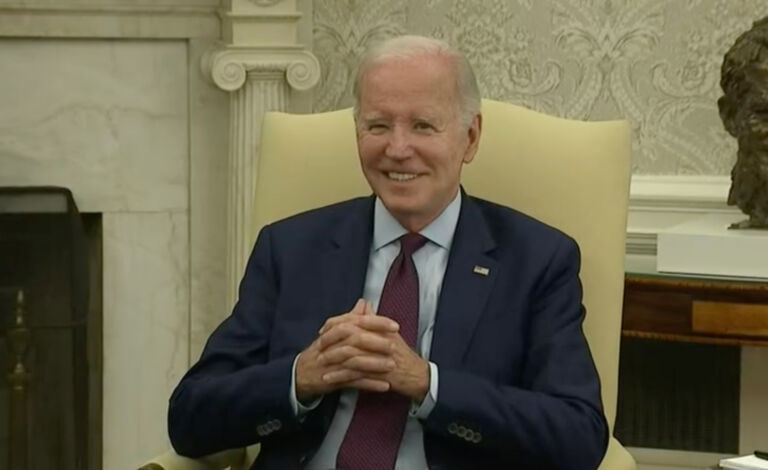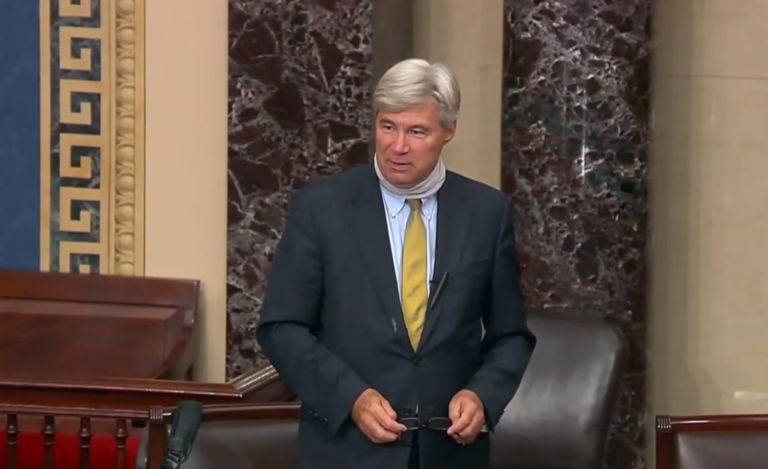At Forbes.com, economist John Goodman reviews a new book about the making of the Affordable Care Act. The book is Stephen Brill’s America’s Bitter Pill: Money, Politics, Backroom Deals and the Fight to Fix Our Broken Health Care System,
Goodman highlights some of the cronyism described by Brill:
The pharmaceutical industry, for example, would reap a $200 billion windfall over the first ten years of what would eventually become the Affordable Care Act. In return, Baucus wanted $130 billion back in the form of lower drug prices under Medicare and Medicaid and a tax on drug company revenues. If the Finance Chairman didn’t get his way, there were threats on the table: Medicare could start negotiating drug company prices the way governments in other countries do, we could make it easier for Americans to buy drugs from pharmacies in Canada and comparative effectiveness research might discover that a lot of drugs simply aren’t worth what they cost.
Billy Tauzin, the capable head of PhRMA also came ready to deal: $80 billion in concessions was his bottom line and he wasn’t going to budge. Ultimately, Tauzin prevailed, and Brill explains why. To have any chance of legislative success, the Democrats needed 60 senate votes. Without PhRMA, Tauzin knew they would never get to 60.
The drug companies did throw in a sweetener, however. They put up $70 million to fund an advertising campaign to sell ObamaCare to the public. Although a number of liberal groups were nominally cosponsors of those TV ads, it was (ironically) the pharmaceutical industry that sold health reform to the general public.
What was true of Big PhRMA was true of other industry groups with the political power to derail the entire effort. Health Care special interests as a whole spend four times as much as the military industrial complex on lobbying and campaign contributions, writes Brill.
The gain for hospitals from health reform was estimated to be between $200 and $250 billion. In return they agreed to give back $155 billion in the form of Medicare cuts. They also avoided any serious antitrust objections to consolidation in their industry. The medical device industry had to accept a $30 billion hit in the form of a 2 1/2% tax on their revenues.
The health insurance industry bargain was a bit more complicated. The companies were willing to accept guaranteed issue and community rating (no discrimination against applicants on the basis of health condition) in return for a strong individual mandate and generous subsidies. That’s the only deal they wanted.
But as negotiations continued, the bar kept rising. They ultimately faced a hefty tax on insurance company revenues (including the plans that administer Medicaid and Medicare Advantage), the White House came up with an ill-conceived limit on insurance company profit by means of a “Medical Loss Ratio” requirement and in the end the mandate was not nearly as strong and the subsidies not as generous as the companies had hoped.
Officially, the America’s Health Insurance Plans (the trade group of the insurers) supported the Affordable Care Act. But the “big five” carriers – Aetna, Cigna, Humana, UnitedHealthcare and WellPoint – secretly contributed $86 million to a US Chamber of Commerce effort to oppose ObamaCare.
And Goodman points out some additional cronyism that Brill omits:
If there is a disappointment in Brill’s narrative, it concerns the role of big business and big labor. He notes the special tax on self-insured plans, but fails to say what these interests got in return. What they got was huge: health reform basically leaves them alone.
Very few individuals and very few small businesses will be able to satisfy the requirements for “grandfathering” for very long. But the regulations are quite kind to self-insured plans in that regard. Also these plans have enormous discretion over what benefits to cover. For example, for the first two years these plans did not have to cover hospital care in order to be ObamaCare compliant!
Basically, any group that had the potential to derail the reform was bought off in one way or another. Here are a few other biggies Brill overlooks. In return for selling out the seniors by agreeing to huge cuts in Medicare, AARP could expect a large flow of people from Medicare Advantage plans into the market for Medigap insurance. AARP makes more money selling Medigap insurance than it makes on member dues. In return for selling out the doctors (and not insisting on a fix to the persistent problem of Medicare cuts in doctor fees) the AMA got to keep its monopoly on medical billing codes. The AMA earns more money selling rights to the billing codes than it collects in member dues.
There were deals with the National Association for Independent Businesses (NFIB) that essentially threw America’s largest job creation sector under the bus. The Health Underwriters (insurance brokers) made a deal that its own members would soon regret.
Goodman ends by discussing a missed opportunity:
White House health policy advisor Zeke Emanuel favored the McCain approach and White House economic advisor Jason Furman wrote a whole paper endorsing it while he was at the Brookings Institution.
Here’s why this is important. Although ObamaCare was supposed to be about health reform, right now there are only about 8 to 10 million Americans who have good economic incentives on the buyer side. In the ObamaCare exchanges, people get a fixed-sum subsidy that does not increase if they buy more expensive insurance. By contrast, everyone else in the country faces incentives that are just as perverse as they were before reform – if not worse. The 149 million Americans who get health insurance at work, for example, can all lower their taxes by buying more expensive insurance. And when they over-insure, they will also over-consume health care – whether it’s valuable or not.
Brill notes that Democratic Senator Ron Wyden at one point threatened to introduce a variation of the McCain approach right in the middle of the ObamaCare negotiations. But he completely misses why that would have been so disruptive. Republicans would have had a hard time voting against the McCain approach. And with Wyden’s sponsorship, it might have attracted Democratic votes as well.
Think about that. Instead of a completely partisan, special-interest-driven health reform, we might have had a bipartisan bill that really reformed the entire health care system.


